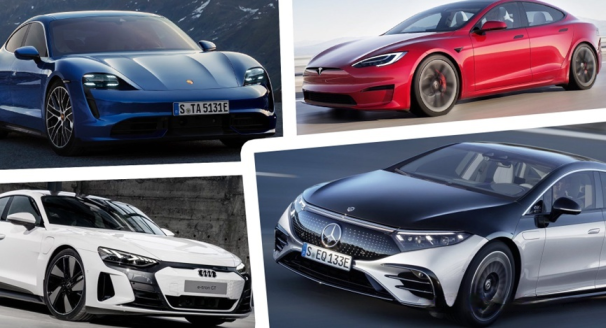In recent years, the new energy vehicle market has fully utilized the characteristics of traditional car companies’ slow strategic transformation and long development time. A large number of new forces have firmly occupied the market and reputation advantages with their earlier start and product launch time. They have also formed a dominant position in consumers’ understanding and purchasing methods of new energy vehicles. So, how should traditional car companies break through this situation?
Electrification and intelligence also need complete vehicle performance as the basis
In the early years, many new car companies were very biased in their own product promotion, focusing on electrification and intelligence, but they did not pay attention to the basic performance of the whole vehicle. Are these aspects of performance not important? Actually, they are not. Electrification and intelligence also need complete vehicle performance as the basis. Taking the driving experience, which is the core of electrification, as an example, because the basic characteristics of the motor are different from those of the internal combustion engine, it goes without saying that the characteristics of torque output and acceleration curve changes are different. With regard to the unique energy recovery characteristics of motor drive, it brings completely different deceleration characteristics compared with the internal combustion engine era. At the same time, it also brings a unique driving mode of single-pedal operation in the vehicle’s stopping process.
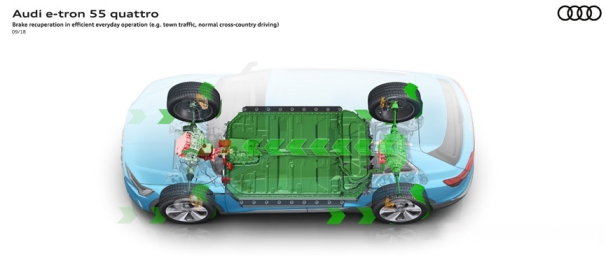
As an example, taking energy recovery and single-pedal operation mode as an example, the calibration of driving performance is particularly important. These functional experiences are not simple function configurations, but the longitudinal control logic and actual scenario calibration derived from the longitudinal acceleration and deceleration calibration in the traditional sense. Some manufacturers believe that default high energy recovery can bring better endurance experience, and some manufacturers believe that low energy recovery can bring better continuity of driving experience in the internal combustion engine era. We cannot evaluate the superiority and inferiority of such decisions that replace users’ thinking, but in actual driving, they cannot cover the experiential needs of all users.
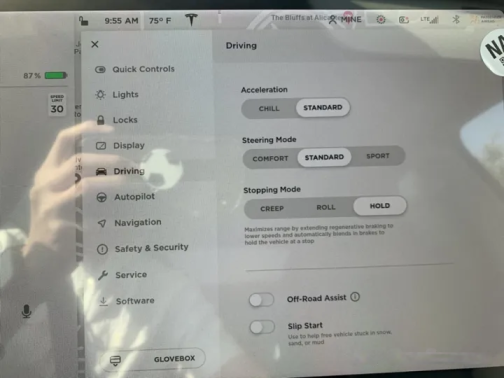 In traditional car manufacturers, we can see the breakthrough solutions to deal with the difficult choice problem, including BMW, Porsche, and Genesis pure electric cars using energy recovery or even adaptive energy recovery. Although the assistive driving level of these brands is not high, the combination of energy recovery and assistive driving ability is truly a big innovation in common driving functions. Users no longer need to judge the distance and speed difference with the front car to release the accelerator pedal in advance, but actively adjust the deceleration within the deceleration threshold, and try to satisfy the true single-pedal driving behavior as much as possible within the range of motor energy recovery.
In traditional car manufacturers, we can see the breakthrough solutions to deal with the difficult choice problem, including BMW, Porsche, and Genesis pure electric cars using energy recovery or even adaptive energy recovery. Although the assistive driving level of these brands is not high, the combination of energy recovery and assistive driving ability is truly a big innovation in common driving functions. Users no longer need to judge the distance and speed difference with the front car to release the accelerator pedal in advance, but actively adjust the deceleration within the deceleration threshold, and try to satisfy the true single-pedal driving behavior as much as possible within the range of motor energy recovery.
Similarly, the design of VROD paddle shifters adopted by the Cadillac LYRIQ for kinetic energy recovery is adjustable without gears to reduce motion sickness and improve vehicle endurance through energy recovery. This can be regarded as a fully innovative experience brought by traditional automakers making full use of their own advantages in this direction, and not just limited to simple calibration of a single deceleration curve but fully catering to user needs through complete calibration.
Then, various new forces have recently highlighted the intelligent cockpit experience, mainly focusing on improving the number of audio speakers and combining directional sound fields, surround sound, stereo, sound source positioning, and other new technologies, even evolving to the concept of panoramic sound and promoting audio with the three-digit standards of a cinema. The logic inside is not to conform to the cinema standard by using the rough relative position of the in-car speakers and the main driving user, but to achieve an immersive listening experience in a certain hardware-based method through software virtualization, incorporating more hardware configuration improvements and software algorithmic counterparts.The audio experience is not simply about stacking speakers and amplifiers with virtual software algorithms. It is a complete experience that combines the NVH performance of the entire cockpit with the audio tuning that fully integrates with the interior layout of the cockpit. Starting from the early passive cockpit silencing technology and active cockpit noise reduction technology, many traditional manufacturers have focused on the full integration of sound insulation and audio performance.

Different Paths for Driving and Handling Experience
When advocating driving and handling performance, many new forces in the industry will mention which internationally renowned engineering consulting service providers provide tuning support after discussing chassis hardware design and configuration. These include, but are not limited to, Lotus Engineering, which was used by many domestic manufacturers in the early days, Porsche Engineering and Williams Advanced Engineering, which have recently made frequent appearances. In comparison, the exclusive teams of traditional automakers may not be as well-known, but they are able to focus on honing the brand’s unique driving and handling DNA day by day. Speaking of the three main German luxury brands in traditional automakers, BMW M, Mercedes-Benz AMG, and Audi RS, they all attract a group of loyal fans with their driving and handling performance. However, they can also polish out unique driving and handling experiences that belong to different brands based on their own hardware foundation. As for traditional American brands, last year, Cadillac CT4-V and CT5-V won the Zhejiang International Circuit lap record, which also proves that the handling performance of American luxury brands cannot be underestimated.
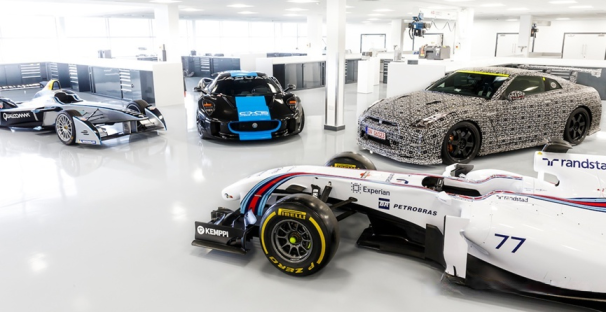
For Cadillac’s pure electric vehicle LYRIQ, although it does not have configurations such as electromagnetic control shock absorbers and air suspension that new forces have almost universally adopted, it has continued its traditional advantages in vehicle dynamics, suspension and overall vehicle design, and performance tuning. For example, in order to ensure both lateral suspension support during cornering and comfort on bumpy roads, Cadillac specifically improved lateral stiffness. Its tires were also specially developed in cooperation with Michelin to adapt to the specific model, making the tires better match the overall vehicle performance and solve problems such as the heavier overall vehicle weight and axle load, as well as different power characteristics of pure electric platform vehicles at the tire level.

As a comparison, there are also many things worth praising in the driving aspect of new forces in the automotive industry, such as the double-chamber air springs that previously only existed in the million-dollar price range mounted on XPeng G9 and the all-new ES8 from NIO. Compared with the common single-chamber air springs, the intergenerational difference is achieved. The stiffness curve of the single-chamber air spring can only be slowly controlled in a steady state with the variation of the air spring’s height setting. It evolves into a transient switching of the stiffness curve composed of two independent air chambers superimposed and combined. With the same height settings, the stiffness curve can switch between soft and hard instantaneously. Moreover, the soft and hard cover a wider range of stiffness of the original air spring, realizing qualitative changes in the driving and riding experience of the same model car.
_result_20230206164433.png)
For example, the active rear-wheel steering technology that was previously found only on many high-priced luxury brands is also being installed by several new car companies, including the Gaode HiPhi X and Zhi Ji L7. They are not only limited to low-speed steering to reduce turning radius, but also actively participate in optimizing various driving dynamics at high, medium and low speeds, thus realizing the egalitarianism of high-end chassis technology.
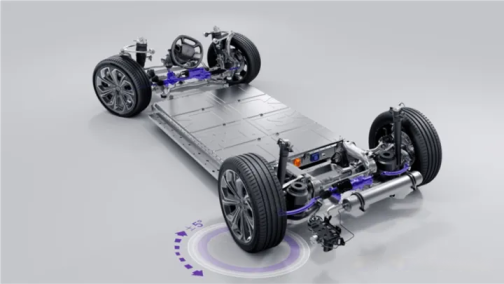
Compared with the optimization of the bottom technology route, the same-priced egalitarian high-end technology configuration includes electromagnetic or electronic control shock absorbers, air springs, and rear-wheel steering technology. This kind of choice, which uses more expensive material costs to compete in a lower dimension, gives consumers technical configuration and equivalent experience that belonged to a higher price range in the past. It is difficult to say which route has the advantage, but both choices are made to give users a better product experience.### Conclusion
There is no need to deliberately focus on whether it is a traditional automaker or a new force. After all, driving a car is a daily necessity. The choice after experiencing the actual car is more important. After saying so much, it’s still better to book a test drive and experience it yourself.
This article is a translation by ChatGPT of a Chinese report from 42HOW. If you have any questions about it, please email bd@42how.com.
